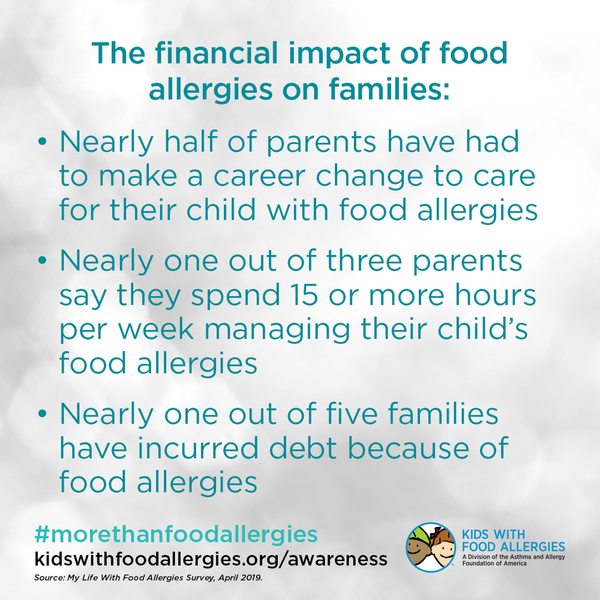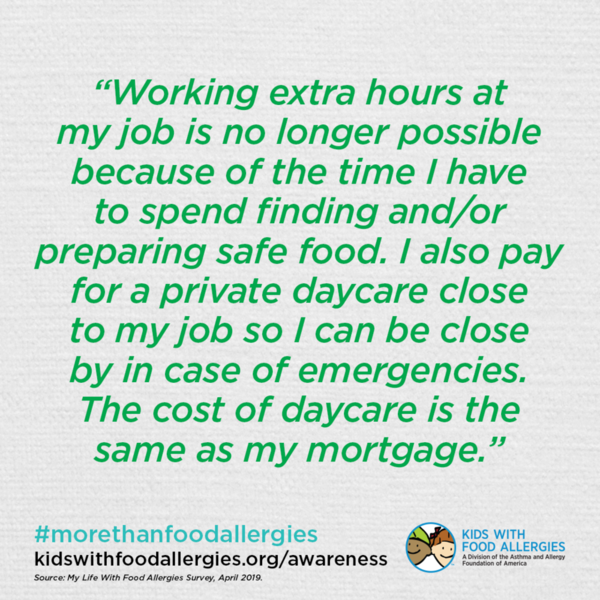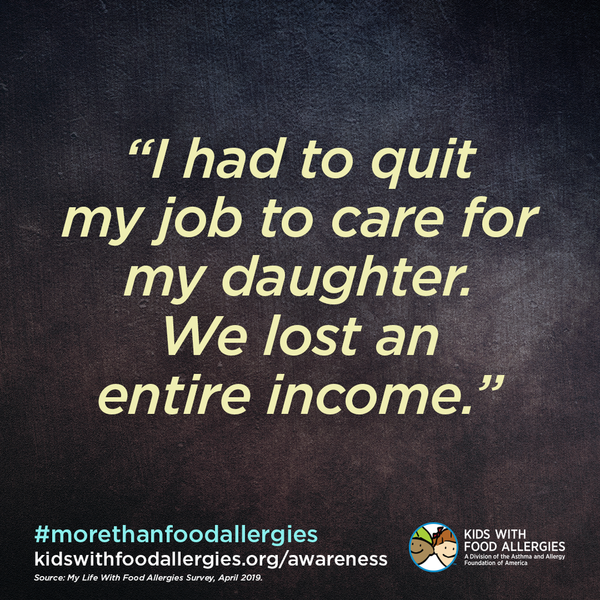Kids With Food Allergies (KFA) conducted the My Kid's Life With Food Allergies survey in April 2019. We surveyed 1,234 parents of children with food allergies to capture more information about the full impact of food allergies on families' lives – including the economic burden of managing this chronic disease.
The initial summary of the data shows that food allergies trigger significant financial stress on families:
- 44% of parents have had to make a career change to care for their child with food allergies
- 29% say they spend 15 or more hours per week managing their child’s food allergies
- 18% have incurred debt because of food allergies
Other research supports the economic impact of food allergies. A 2013 study said the cost of food allergies in children in the U.S. is likely around $25 billion per year. That's about $4,184 per child per year.
- Yearly direct medical costs due to food allergy were estimated at $4.3 billion or $724 per child:
- Hospitalizations ($1.9 billion)
- Outpatient visits to allergists ($819 million)
- Emergency room visits ($764 million)
- Pediatrician visits ($543 million)
- Out-of-pocket costs for caregivers of children with food allergies was $5.5 billion or $931 per child:
- Cost of special diets and allergen-free foods ($1.7 billion)
- Changes in child care due ($857 million)
- Changes in schools ($650 million)
- Yearly lost labor when caregivers took their child to medical visits was $773 million or $130 per child
- Allergist visits ($318 million)
- Pediatrician visits ($165 million)
- Emergency room visits ($148 million)
- Yearly job opportunity costs were about $14 billion or $2,399 per child – including losing their job, fewer job choices, giving up a job or changing jobs

Finding and preparing safe food requires extra time. It involves reading labels, calling food manufacturers and often cooking from scratch. Manufacturers can change ingredients and processes at any time, which means you have to check every label every time.
Dining out and eating school lunches are not always options either. Parents of children with food allergies must plan and prepare almost all of the food their children eat.

Many families must make changes to keep their children with food allergies safe. Finding a safe environment for is critical. If they can't find safe child care or schools, they may have to make other arrangements. For example, they may have to pay for private care, or one parent may have to leave their job. And losing an income, added to higher food expenses and medical costs, can be very hard on a family's finances.

If you are impacted by the extra costs of food allergies and need financial assistance, you have a few options.
- Allergy-friendly food banks
- Special Supplemental Nutrition Program for Women, Infants, and Children (WIC)
- Patient assistance programs for epinephrine
If you are spending a lot on special allergy-friendly foods prescribed by your doctor, the costs may be tax deductible. Talk to your doctor and tax preparer to find out more. Also check the tax laws for medical deductions each year in case they change.






Comments (0)